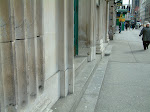Understanding Portions vs. Serving Size
- A “portion” is how much food you choose to eat at one time, whether in a restaurant, from a package, or in your own kitchen.
- Portions can be big or small, it depends on how much you choose to eat.
- A serving is a measured amount of food or drink, such as one slice of bread or 8 ounces of milk.
- It is also the amount of food listed on a product’s Nutrition Facts.
- Sometimes, the portion size and serving size match; sometimes they do not.
- Keep in mind that the serving size on the Nutrition Facts is not a recommended amount of food to eat.
- It is a quick way of letting you know the calories and nutrients in a certain amount of food.
- Learning to recognize standard serving sizes can help you judge how much you are eating.
- When cooking for yourself, use measuring cups and spoons to measure your usual food portions and compare them to standard serving sizes from Nutrition Facts of packaged food products for a week or so.
- Put the suggested serving size that appears on the label on your plate before you start eating.
- This will help you see what one standard serving of a food looks like compared to how much you normally eat.
Retrieved by the National Institutes of Health








